Clear path: Increasing the adoption of accessibility policy in municipalities
Published: July 2025
MaRS and the Rick Hansen Foundation worked with municipalities in a targeted accelerator to help their communities foster more accessible and inclusive spaces.
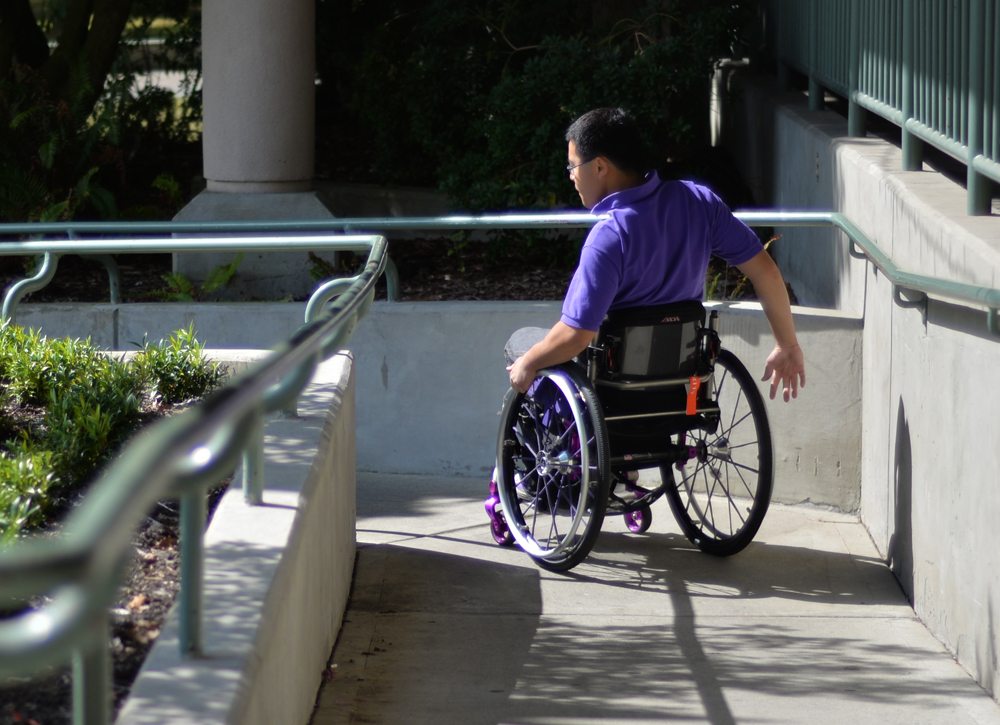
MaRS Discovery District and the Rick Hansen Foundation worked together to support the efforts of small and medium-sized Canadian municipalities to accelerate their adoption and implementation of accessibility policies in the built environment. Providing support to municipalities could help them remove barriers for people with disabilities through the provision of meaningful access to buildings and sites where people live, work and play, ultimately contributing toward Canada’s goal of becoming barrier-free for all people by 2040.
Municipalities participated in a cohort accelerator program through a series of four workshops held once a month between January and April 2024. The cohort included 65 participants from 22 municipalities across Canada. The program targeted communities that had a population of less than 300,000 (the total cohort represented 3,345,000 people). Over the course of the four workshops, municipalities completed 12 activities.
Prior to the workshop series, the team conducted a mix of primary and secondary research in the fall of 2023, aiming to understand the barriers and opportunities in adopting accessibility policy in the built environment.
To request any of the following documents in an alternate format, such as braille, large print or audio, please email media@marsdd.com.
Barriers and opportunities in adopting accessibility policy in municipalities
– The Rick Hansen Foundation
Improving accessibility in the built environment has many economic benefits for a municipality. Making facilities and built environments more accessible allows more people with disabilities to access educational institutions, expand employment opportunities, increase consumer spending, increase social engagement and inclusion, and improve their overall well-being. In 2018, the Conference Board of Canada estimated that improving workplace accessibility would result in a permanent increase in real GDP of more than $16.8 billion by 2030, generating significant additional revenue for governments.
Our research phase revealed that municipalities and other organizations face many barriers when adopting accessibility policy in the built environment. This makes it challenging for them to shift how they use space, apply inclusive design and leverage adaptive processes to improve accessibility.
All levels of government within Canada play a pivotal role in the shape and vision for this country’s built environment. Canada’s accessibility standards are set at the federal, provincial and municipal levels. According to a 2020 CSA Group study, accessible built environments “ensure the physical environment allows persons with disabilities to move freely around building and public spaces (indoor and outdoor).” Under Canada’s constitution, provinces and territories have primary jurisdiction over construction and are responsible for enacting the national building code through legislation, which is then implemented at the municipal level. At the local level, provisions may also go beyond — or supersede — the minimum requirements to meet zoning bylaw or land-use regulations as enabled by provincial or territorial legislation and jurisdiction.
Building codes list the minimum built environment requirements that public and private infrastructure must meet within a given jurisdiction. It is assumed, but not required, that both public and private organizations will go beyond minimum requirements.
– A municipal representative
The dynamic nature of the accessibility landscape, combined with the growing number of standards and frameworks employed across Canada, makes it difficult and confusing for communities to implement, monitor and enforce these standards. It creates gaps and inconsistencies, as well as contradictory and/or operational misalignment in applying, monitoring and enforcing accessible building codes, standards and regulations. It is also challenging for those working within those policies, such as developers, contractors and employers, who are required to comply with the long list of standards and frameworks. Unfortunately, building codes don’t always create meaningful accessibility and can lead to implementation of the bare minimum.
Understanding the barriers
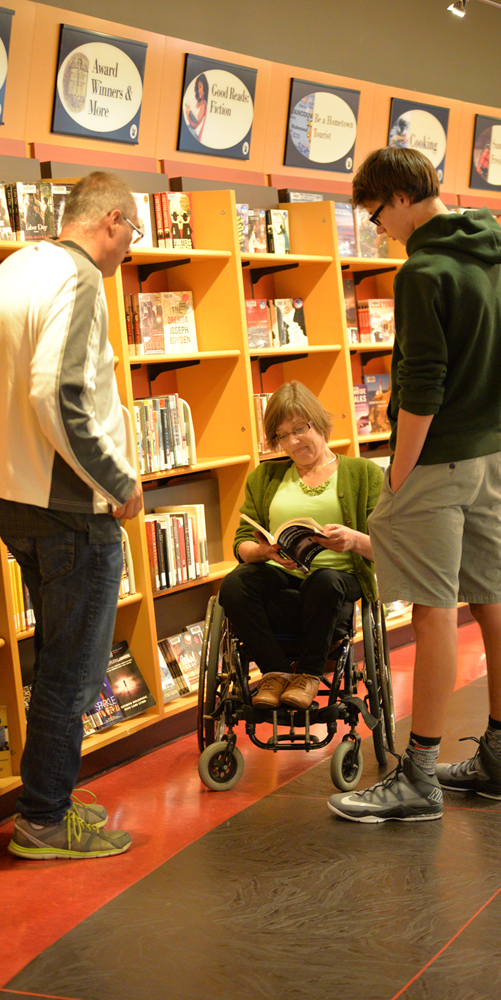
The Richmond Public Library is working to advance barrier-free access to its collections.
Many municipalities face common challenges in implementing accessibility policies in the built environment. Here are the barriers that surfaced in our primary and secondary research.
- Attitudinal barriers: Misconceptions about accessibility and lack of understanding surround the importance of accessibility in the built environment and can affect support from stakeholders. This includes subjective perspectives of priorities, fears of rising costs, a lack of understanding of the benefits of accessibility, not fully understanding the legal requirements related to accessibility standards, not knowing that standards and legislation are meant to be minimum requirements, and that fully accessible built environments exist beyond codes and legislation. This barrier is further amplified by resistance to change.
- Complex regulatory environment: Policies and frameworks associated with accessibility standards are complex and confusing to harmonize and coordinate. They encompass legislation, regulations and programs that span federal, provincial and municipal jurisdictions and multiple government departments. This adversely creates gaps, inconsistencies and contradictory and/or operational misalignment in applying, monitoring and enforcing accessible building codes, standards and regulations.
- Resistance to change: Accessibility is not static, and our understanding of unmet needs must continue to evolve and adapt, leading to a constant need to change. This can be met with resistance due to misconceptions based on attitudinal barriers, perceived liability concerns and risk aversion culture.
- Budget constraints: Limited financial resources and competing strategic priorities can make it challenging to invest in accessibility and infrastructure improvements, such as retrofits of existing structures to meet accessibility standards.
- Unique urban geography: Accessibility needs may differ based on the physical, social and economic aspects of urban geography. These various aspects impact municipal planning and development, making each municipality unique.
- Limited internal and external expertise: Municipalities often operate in a siloed manner and may have limited in-house expertise in accessibility and universal design, which can hinder the development and implementation of effective policies. When municipalities procure external subject matter experts in accessibility, issues and inconsistencies can arise during the work or implementation, as their knowledge may be based solely on the minimums set by the building codes, inadvertently creating barriers to accessibility.
- Competing priorities: Across municipal governments there exist numerous competing priorities, including transportation, housing, social services and climate change programs, leaving accessibility improvements to compete with other pressing issues for funding and attention. Within the accessible design space, needs tend to be specific and can come at the expense of different equity-seeking groups, as disabilities may require competing accommodations.
- Political factors: Political considerations and shifts in municipal leadership can influence the prioritization of accessibility policies. Changes in administration and individuals’ personal experience with accessibility may lead to shifts in focus, resource allocation and prioritization.
Municipalities need to be accessibility-confident and enabled to manage disability as a business priority. This shift could improve customer experience, productivity, project and program development, inclusive employment opportunities, and community trust.
Improving access
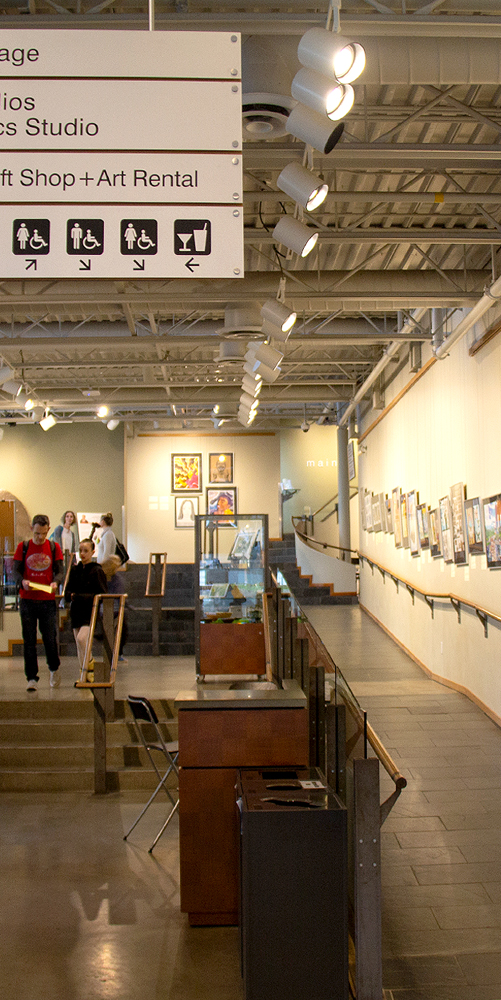
Surrey Arts Centre is committed to providing accessible and inclusive services, programs and opportunities.
Here are some ways in which municipalities can leverage opportunities to prioritize and improve accessibility in their communities.
- Increasing education and awareness: Provide increased information on disabilities to reduce misconceptions, stigma and internalized ableism. This will help decision-makers, staff and community members recognize and understand the full spectrum of disabilities (including people with developmental and mental health disabilities, environmental sensitivities and addictions), recognize and understand the impact of intersectionality, shift to an accessibility culture and apply an accessibility lens, and increase social inclusion.
- Leveraging municipal authority for regulatory measures and incentives: Municipalities can regulate land use and building standards to ensure construction projects prioritize inclusion in new builds and retrofits and introduce accessibility features into private buildings. This can include changes to land zoning, density permissions, building types, rebates and tax deductions and streamlined approvals processes, as well as accelerating projects that help achieve accessibility goals.
- Shifting to an accessibility culture: Municipalities can focus on a shift of their internal culture by including people with disabilities in the creation of policies and regulatory frameworks that impact them, explaining why and how specific practices promote or obstruct accessibility and helping accessibility leadership champions to drive accessibility strategy forward.
- Embracing procurement practices and universal design: Municipalities can significantly improve their services and the lives of residents while meeting budget constraints by conducting accessibility audits of the built environment, adopting universal design concepts in the planning phase of built environment projects, adopting innovative procurement practices that focus on achieving accessibility by purchasing for specific outcomes instead of detailed technical requirements, and leveraging purchasing power and collaborative procurement efforts to allocate limited financial resources in the most impactful way possible.
- Embracing urban identity and diverse neighbourhoods: A nuanced approach considers the diverse needs of neighbourhoods combined with tailored policies and interventions based on each area’s specific characteristics to help identify, address and avoid inequalities, and promote supportive built environments. Municipalities can deploy a quick-win approach through rapid, low-cost projects to address safety issues, equity concerns and infrastructure gaps through collaboration with the community to identify and promote innovative solutions.
- Building capacity: Municipalities can increase internal staff to include people with disabilities, incorporate disability training to increase awareness and encourage shifting to an accessibility culture. When procuring external resources, such as contractors and consultants for accessibility projects in the built environment, municipalities can incorporate specific targets, metrics or benchmarking tools in their requests for proposals to prevent misinterpretation of accessibility.
- Collaborating and creating integrated plans: Municipalities can engage in community networks to work together to find opportunities and enablers to common barriers, and can improve outcomes while also sharing knowledge and expertise. For example, this could include creating a database of case studies; helping gain stakeholder buy-in with proven outcomes and benefits; developing long-term plans that integrate various sectors, such as climate change, housing, transportation and economic development; and embracing universal design, which shifts toward proactive practices and promotes the efficient use of resources by designing multi-functional and adaptable spaces that can serve various needs over time.
- Developing accessibility leadership: Elected leaders are the decision-makers with the power to ensure accessibility is a priority within a municipality, regardless of shifting political factors. Leaders can create and implement a strategic accessibility plan with measurable outcomes so that if an incoming elected leader does not believe in accessibility, they cannot dismantle strategies and frameworks that are already in place. Similarly, instituting an accessibility strategy and action plan specifically for the built environment can help empower elected officials to move work forward at a faster pace than was previously possible.
The biggest improvement a municipality can make right now is to get started. Utilize current resources and capacity, acknowledge and accept that mistakes will happen, and understand that accessibility is a journey rather than a destination.
Review our research report to learn more about the barriers and opportunities that surfaced during the research phase of this project.
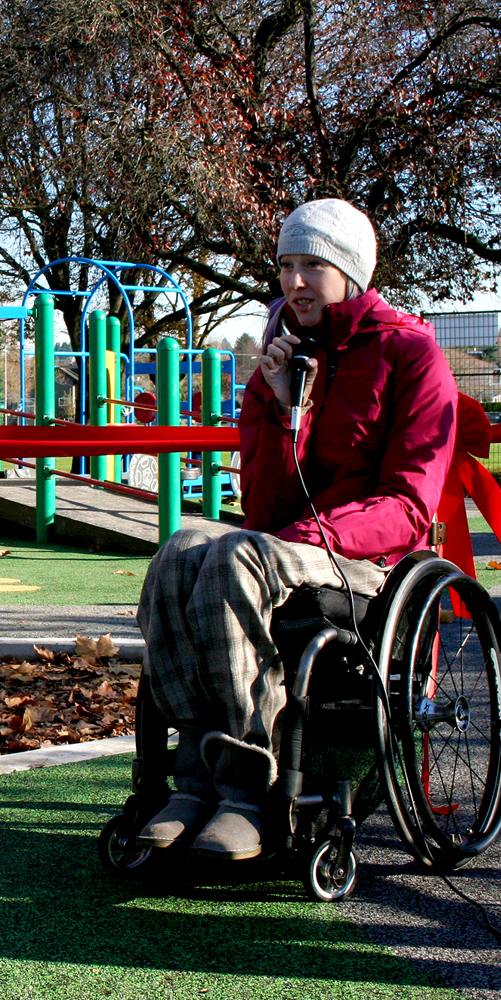
Carnarvon Park in Vancouver offers a variety of recreation opportunities.
The Municipal Accessibility Policy Toolkit
This tool kit aims to accelerate the implementation of accessibility policies.
MaRS supported the Rick Hansen Foundation to create the Municipal Accessibility Policy Toolkit to help municipalities — individual line managers, accessibility and policy teams, real estate and asset managers — accelerate the implementation of accessibility policies in the built environment. The toolkit can help municipal staff build empathy and understanding of barriers faced by people with disabilities, build an implementation approach for action, gain buy-in and support from various stakeholders, and make strategic decisions with scarce resources.
Click here to access the tool kit
Municipal Cohort Accelerator Workshop Findings
Are you curious about what the 22 municipalities learned and discussed during the 2024 workshop series? Read the work shop summaries below to gain an understanding of the perspectives of other municipalities.
Workshop 1: Challenges and aspirations
The first workshop examined the goals as well as the challenges; municipal participants discussed their strategic aims, barriers and enablers related to improving accessibility.
To shift the barriers into opportunities, participants identified inspirational actions they could take to improve accessibility policy after exploring the ideas from other building owners and managers, including two municipalities, a post-secondary institution and a provincial government. The actions included:
- Consult more with people with lived experience
- Involve all departments in action
- Assign dedicated funding to accessibility
- Set specific goals, standards and policies
- Be proactive in planning and not reactionary
- Celebrate successes
- Acknowledge that accessibility is an ongoing journey
Workshop 2: Policy and approvals processes
The second workshop focused on policy and getting approvals. Participants reviewed and mapped their municipalities’ current policies and processes, then identified opportunities to improve their agility.
The participating municipalities identified 70 sites where they were planning to take action in the coming year. The top three sites selected to action through accessible design project implementation included a city or town hall (13 sites), an arena (12 sites) and a community centre (10 sites). Coincidentally, the top three sites identified by municipalities also have the highest sources of municipal greenhouse gas emissions from an operating perspective (including pools, which was the fourth most selected site type). These sites are top candidates for municipalities to combine accessibility action with climate- and energy-related retrofits or new construction as part of their planning and implementation activities.
Municipalities indicated they would be working with existing sites for the majority of their design projects (54 sites or 77 percent). Municipalities noted their capability for action on those projects through a maturity assessment and review of the strategies they have in place to do the work. Across the assessment questions, the average maturity level ranged from two to three on a scale of one to five, regardless of whether municipalities had long-standing accessibility legislation or new or no legislation at a provincial or territorial level. Municipalities suggested that focusing on people, process and policy was key to adding agility as it relates to adopting accessibility policy in the built environment.
Workshop 3: Adaptation and execution
The third workshop explored adaptation of policy. Municipalities prioritized accessibility action items, then mapped a user journey to a municipal site to assist them in confirming or adjusting their priorities.
Participants ranked seven common site elements across six categories related to infrastructure where they could take action to increase the accessibility of a fictional community centre. This site had no historical considerations and required renovations and upgrades. They ranked a visual fire alarm as the most important element, followed by access to parking spaces, a universal washroom, new signage, adding/moving furniture, HVAC updates, high-efficiency windows and a paint refresh. Following the ranking exercise, participants completed a user journey for a person visiting the fictional community centre and documented potential enabling actions they could take as a municipality to improve the person’s experience. They recommended focusing on improving communication and service offerings, as well as supporting staff to help community centre users better plan a visit, travel to the community centre and use its facilities.
Workshop 4: Policy adoption road map
In this workshop, municipalities developed a road map for improving accessibility policies, considering what pathways and partnerships could be leveraged to help them meet their accessibility goals.
Municipalities identified different funding sources and types of partnerships, relationships and collaborations that could enable accessibility policy action in the built environment. Municipalities also defined activities that could be completed within short (12 months), medium (one to three years), and long (four to 10 years) timelines. Lastly, municipalities created their own accessibility policy road map and pitched a project to their peers to be worked on after the cohort.
The way forward
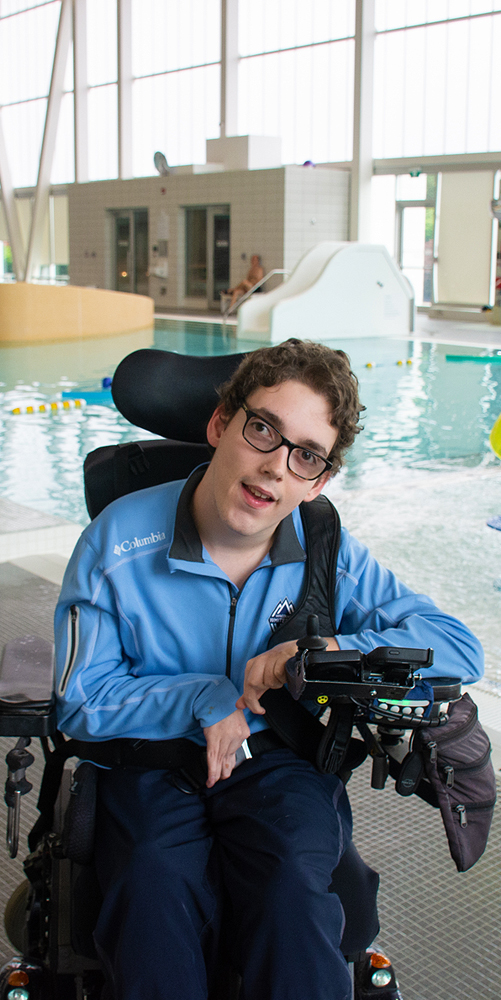
Grandview Heights Aquatic Centre offers programs for everyone in the community.
After completing the cohort, participants indicated that they had increased knowledge about accessibility and the built environment, as well as policy development and design project implementation. Additionally, participants experienced improved communication within their municipalities and with external partners and became part of municipal networks as a result of joining the cohort.
During the year following the cohort, participants indicated that they would be taking faster action to create local strategies, plans, policies, standards and guidelines. They planned to initiate and implement more design projects and to increase efforts to train staff and gain buy-in from colleagues and city councils around accessibility and the built environment.
To help with future adoption and implementation of accessibility policies in the built environment, municipalities would like more support and tools that include:
- funding for capacity building
- communications
- consultants, staff positions
- grants for policy development and implementation, renovations and complicated projects
Municipalities would also like:
- improved regulatory and policy support that gives more consistent design guidelines
- standards and policies across provinces and territories
- stronger legislation that requires more than an accessibility plan
- targets for implementation
- more information on the resources that will be made available to municipalities, including more knowledge sharing and guidance on their accessibility journeys and where to begin
No matter your starting point or the work you have completed so far related to accessibility, rest assured that this is a learning journey and not a destination. Give yourself permission to get started on accessibility by utilizing your current resources and capacity. Acknowledge and accept that mistakes will happen.